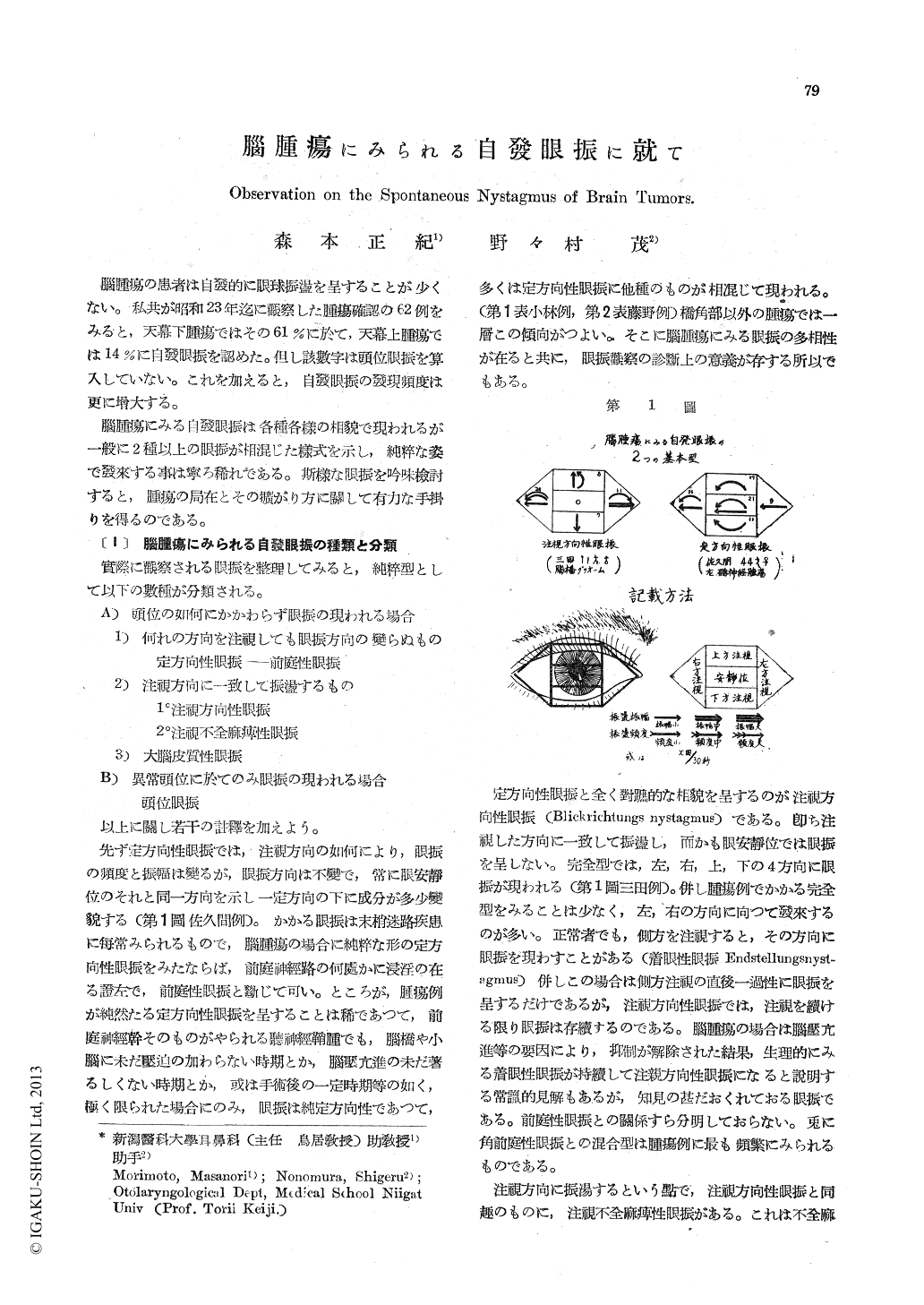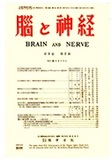Japanese
English
- 有料閲覧
- Abstract 文献概要
- 1ページ目 Look Inside
腦腫瘍の患者は自發的に眼球振盪を呈することが少くない。私共が昭和23年迄に觀察した腫瘍確認の62例をみると,天幕下腫瘍ではその61%に於て,天幕上腫瘍では14%に自發眼振を認めた。但し該數字は頭位眼振を算入していない。これを加えると,自發眼振の發現頻度は更に増大する。
腦腫瘍にみる自發眼振は各種各様の相貌で現われるが一般に2種以上の眼振が相混じた樣式を示し,純粹な姿で發來する事は寧ろ稀れである。斯樣な眼振を吟味檢討すると,腫瘍の局在とその擴がり方に關して有力な手掛りを得るのである。
The spontaneous nystagmus are sometimes obser-ved in cases of brain tumors. The frequency of its occurence was in the authors series, 61% in the infratentorial tumors, 14% in the supratentorial tumors (excluding the positional nysiagmus). The spontaneous nystagmus, observed in brain tumor cases is just various and chiefly of combined type. The standard forms are classified as vestibular nystagmus, nystagmus of looking direction, nystag-mus of looking paresis, cortical nystagmus and positional nystagmus. The two points are to be emphasized at the characterstics in brain tumor nystagmus namely the unfixedaess or irregurality and the transfiguration of the nystagmus direction by the positional changes. When the nystagmus is unfixed and irregular, or the direction depends upon the head position, so it indicates as a rule the intracerebral tumor, but eliminates the extra- cerebral tumor and the other peripheral lesions. But the reverse is not true.
The positional nystagmus is very often noted, just in about the half cases of the supratentorial tumors in this series. Its directions depends upon the head position at the intracerebral tumors. The observation of the positional nystagmus has much diagnostic value. The author discussed it in details.

Copyright © 1951, Igaku-Shoin Ltd. All rights reserved.


